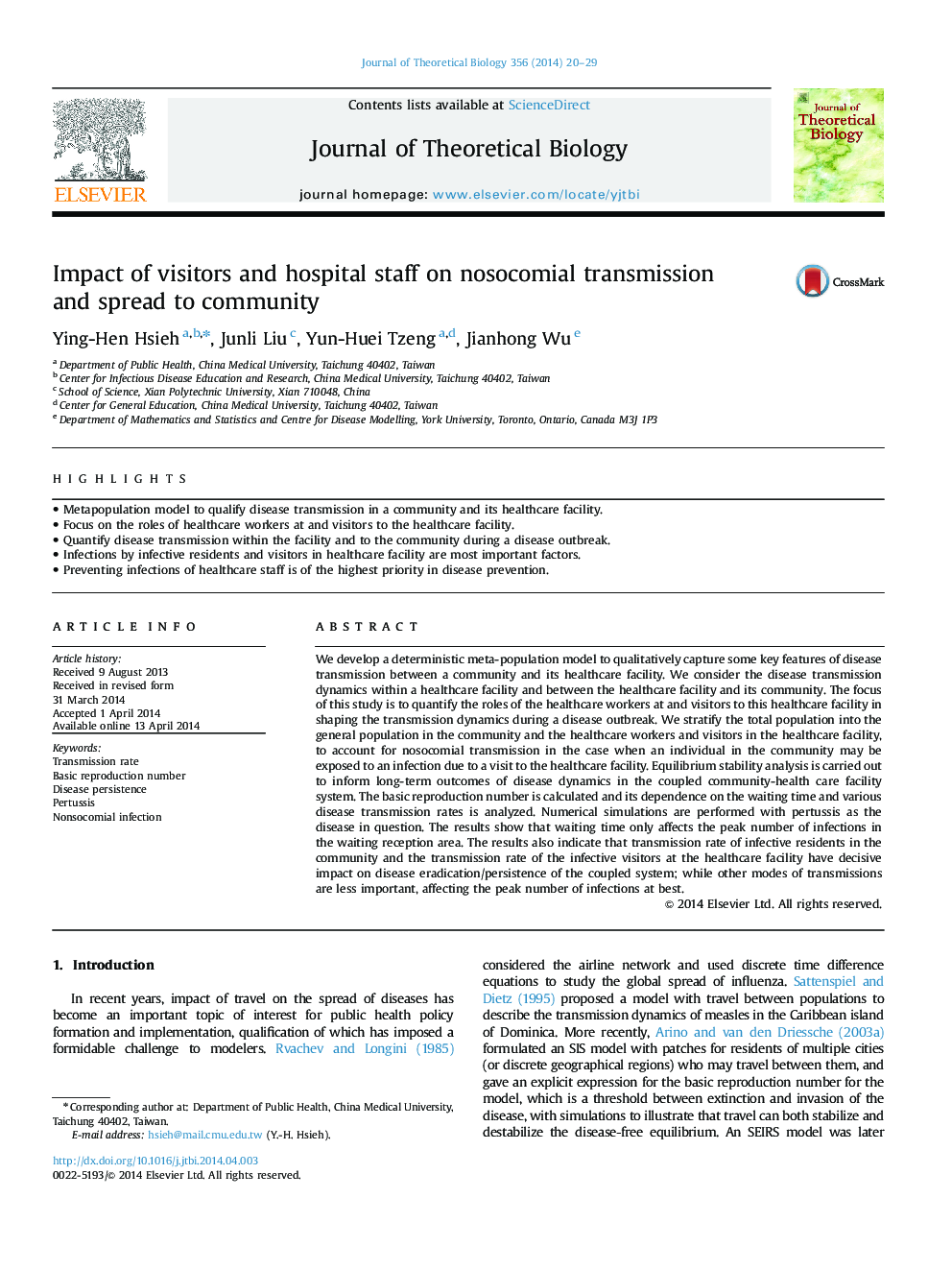| Article ID | Journal | Published Year | Pages | File Type |
|---|---|---|---|---|
| 6370401 | Journal of Theoretical Biology | 2014 | 10 Pages |
Abstract
We develop a deterministic meta-population model to qualitatively capture some key features of disease transmission between a community and its healthcare facility. We consider the disease transmission dynamics within a healthcare facility and between the healthcare facility and its community. The focus of this study is to quantify the roles of the healthcare workers at and visitors to this healthcare facility in shaping the transmission dynamics during a disease outbreak. We stratify the total population into the general population in the community and the healthcare workers and visitors in the healthcare facility, to account for nosocomial transmission in the case when an individual in the community may be exposed to an infection due to a visit to the healthcare facility. Equilibrium stability analysis is carried out to inform long-term outcomes of disease dynamics in the coupled community-health care facility system. The basic reproduction number is calculated and its dependence on the waiting time and various disease transmission rates is analyzed. Numerical simulations are performed with pertussis as the disease in question. The results show that waiting time only affects the peak number of infections in the waiting reception area. The results also indicate that transmission rate of infective residents in the community and the transmission rate of the infective visitors at the healthcare facility have decisive impact on disease eradication/persistence of the coupled system; while other modes of transmissions are less important, affecting the peak number of infections at best.
Related Topics
Life Sciences
Agricultural and Biological Sciences
Agricultural and Biological Sciences (General)
Authors
Ying-Hen Hsieh, Junli Liu, Yun-Huei Tzeng, Jianhong Wu,
